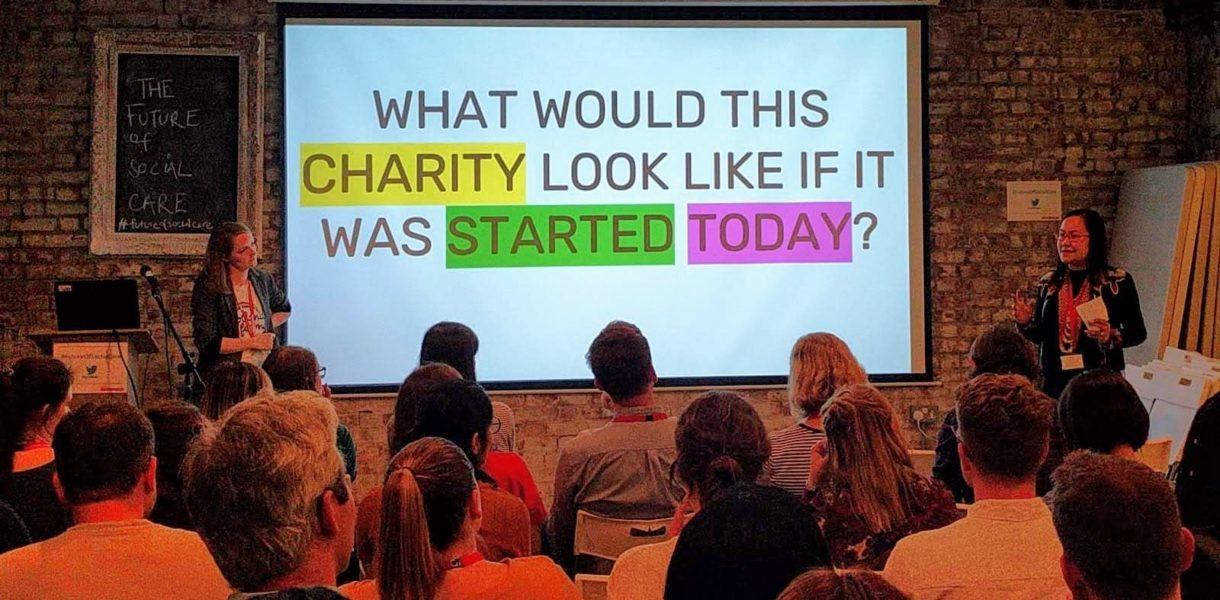 News
News


At Action for Children, we’ve been developing digital services in earnest for the past two years. In that time we’ve gone from having no online services, to reaching and supporting a total of 87,000 children, young people and families in 2018/19.
During Digital Leaders Week we ran an event for our peers about developing and delivering the future of social care, using the principles of user-led service design and throwing ourselves into the tech for good environment.
Along the way, we’ve learned that we need to have humility to understand the real needs and expectations of our users. We’re not our users — and actually even they don’t know exactly what they want, until they see it.
We’ve also learned lots about what it takes to make good service design happen in our charity, and challenged our initial assumptions about what does and doesn’t work.
The social care that’s needed in this country is vastly underfunded. Support for families has massively decreased under 10 years of austerity. This has resulted in a £3.1 billion funding gap in local services for children. The number of children in the UK living in poverty has risen to 4.1 million. And the horrible consequences of this are that today 1 in 10 children has experienced neglect and 1 in 5 children grow up in homes with violence and abuse.
Because there’s a lack of money for services, support is being pushed to the ‘sharp end’. This means that people don’t get the support they need early, but instead statutory help kicks in only once their problems escalate.
This isn’t limited to the children’s sector. If you ask our peers at Age UK, or Mencap, you’ll hear that exactly the same thing is happening in the provision of care for older people and people with disabilities.
So, do we look to Westminster? While our amazing Policy and Campaigns team are working hard to turn the tide of policy, and in many cases succeeding in proving the importance of funding services for children, the positive effects of this hard-won policy change play out in the medium to long term.
We have to look for other ways to support the children that would otherwise fall through the cracks.
And we have to find a way to do that in a context where there is less money and more need. Digital solutions are an obvious answer, for their scalability and one-to-many model.
That’s not to say that we think face-to-face interventions aren’t important and we want to replace them. There’s evidence that huge impact is delivered through the trusted relationships our staff form with our service users. Nor does it assume that everyone has access to phones or WiFi — digital exclusion is a real issue, and one we have to consider with every project. However, digital does provide us with opportunities to reach and support more people and, especially in this climate, we have to take them.
None of this is rocket science and we’re certainly not alone in thinking this way— there’s some really exciting stuff happening in the sector.
Parkinson’s UK have developed wearable technology to help counteract tremors, and worked with Emma who is living with Parkinson’s to create a ‘tried and tested’ directory of useful apps and tools. They’re building service design into their DNA, creating a multi-disciplinary function to make sure that everyone with Parkinson’s has access to support.
Our children’s sector colleagues over at Barnardo’s are committing to provide out of hours and self- service support for children and young people. And their exciting #FutureBarnardos programme, shows they’re taking the need to adapt really seriously.
At Action for Children, we’ve been on a journey to develop proof of concept. We are now in a place where digital opportunities are forming part of our organisational strategy and we have leadership who are clear about the importance of designing services that suit the digital natives we support.
To adapt to — and catch up with — the connected, data-enabled world and deliver impact with limited funding, the sector needs to be building this thinking into everything we do. Not leaving it to our digital teams.
A good start is to ask what our charity would look like if it was founded today? Or, if a start-up had the same problem to solve as we do, how would it go about doing that, or funding itself?
We’re lucky at Action for Children that our leadership are calling for digital to be a fundamental part of how we operate. Because that’s what it will take to shift the sector — we need our trustees and CEOs to be pushing us to change, and asking us what we can do to support more people sooner.
Originally posted here